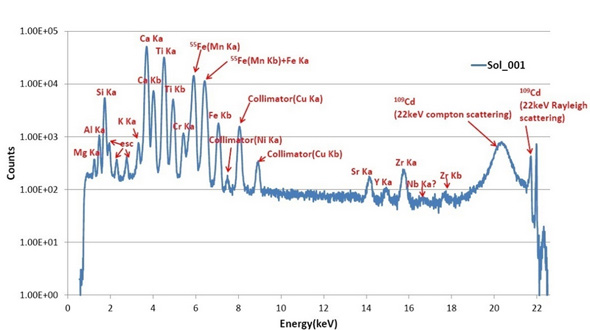You Too Can See Yutu
On Dec. 14, 2013, China successfully put a lander and rover on the Moon.
I was hoping that at some point NASA’s Lunar Reconnaissance Orbiter
would be able to spot it, and it actually happened faster than I
expected:
Photo by NASA/GSFC/Arizona State University
The animated image
shows before-and-after shots of the area. You can clearly see both the
lander (big blob) and the rover (smaller blob) in the “after” picture,
which was taken on Dec. 24, 2013, when LRO was almost directly overhead
the pair. Each pixel in the image is about 1.5 meters in size, and the
whole image is about 600 meters (roughly 2,000 feet) across. The
“before” image was taken in June 2013 and is almost exactly the same
except for the presence of the two human-made objects (the lighting is
also a bit different, but not starkly so).
The rover, named Yutu, is already sending science data back to Earth and in fact took a pretty nifty X-ray spectrum of the lunar surface:
The rover has a device with a small radioactive source in it. This
bombards the lunar surface below it with subatomic particles and X-rays,
which responds by emitting X-rays itself. Each element in the regolith
(what scientists call the crushed up rock and dust on the surface) emits
an X-ray with a very specific energy that’s like a fingerprint,
identifying the material. This can then be plotted to determine what’s
in the regolith, as well as how much of each element there is. You can
see the signals from silicon, aluminum, calcium, potassium, iron, and
more (the “Ka” and “Kb” refer to the way the material emits X-rays, much
like oxygen in our own atmosphere can emit green or red light in an aurora).
So Yutu, like Curiosity on Mars, is a moving chemistry lab, able to determine the composition of the surface over which it travels. If and when humans go back to the Moon (and it’ll be “when,” folks), they’ll want to know this information. The regolith is rich in materials that can be used to create shelter, air, water, and even rocket fuel. At some point, this chemical bounty will be used to sustain a human population on the Moon and allow them to further explore space itself.
So Yutu, like Curiosity on Mars, is a moving chemistry lab, able to determine the composition of the surface over which it travels. If and when humans go back to the Moon (and it’ll be “when,” folks), they’ll want to know this information. The regolith is rich in materials that can be used to create shelter, air, water, and even rocket fuel. At some point, this chemical bounty will be used to sustain a human population on the Moon and allow them to further explore space itself.
I don’t know when that will be, but I suspect it’ll be sooner than
most people think. China is clearly serious about this, and I hope the
American government will start to take it seriously as well. Right now, the White House is still sticking by devastating cuts to NASA’s planetary exploration program. Both the Cassini Saturn probe and the Mars Curiosity rover are under the threat of a budget ax.
Our technology is getting better, our knowledge is growing, and
support by the public is substantial. Now is not the time to be turning
our backs on the solar system. It never is.
Labels: Astronomy, Exploration, Nature, Photography, Space




0 Comments:
Post a Comment
<< Home